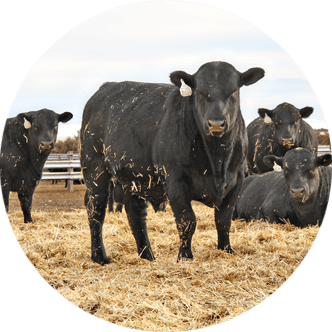Egg prices continue to climb as outbreaks persist
Outbreaks of highly pathogenic avian influenza (HPAI) continue to drive egg prices to record highs across the U.S., according to Texas A&M AgriLife Extension Service experts.
Dr. David Anderson, AgriLife Extension economist and professor in the Texas A&M Department of Agricultural Economics, said egg prices have skyrocketed to record highs due to ongoing supply disruptions caused by HPAI outbreaks in commercial laying flocks.
The U.S. Department of Agriculture (USDA) is reporting “sporadic outbreaks” within commercial meat and egg production flocks.
Since Feb. 8, 2022, more than 134.7 million birds have been lost across 1,410 flock outbreaks, including 637 commercial and 773 backyard flocks in every U.S. state, according to the USDAʼs Animal and Plant Health Inspection Service.
Wholesale prices for large Grade A eggs hit an all-time high of $6.14 per dozen on average nationally Jan. 18, according to the latest USDA report. For perspective, the previous price peak for the same dozen eggs was $5.38 in December 2022 and $2.20 per dozen in January 2023.
Similarly, the price peak in 2023 was related to HPAI outbreaks in poultry flocks, Anderson said.
“There is seasonality to egg prices based on demand, but the cutting of supplies, in this case by disease, has driven prices higher,” he said. “I wouldn’t be surprised to see them go higher in the next report, but there is price volatility when we consider the supply and demand factors in play.”
Laying hen numbers impacting egg supplies
The USDA reported 304 million table egg laying hens in the U.S. flock as of Jan. 1, a 2.3 percent drop compared to the 311 million laying hens at the same time last year.
Dr. Greg Archer, AgriLife Extension poultry specialist and associate professor in the Texas A&M Department of Poultry Science, said the time it takes to rebuild the laying hen flock will depend on factors still in flux.
Environmental conditions are prime for the HPAI-causing pathogen, he noted. The disease prefers temperatures below 90 degrees.
The poultry industry, which has dealt with multiple avian influenza outbreaks since 2015, aggressively applies its biosecurity regimens, but intermittent outbreaks continue to occur.
Archer said migratory birds have historically been the main culprit. For instance, the pathogen might be introduced to a poultry house in the form of migratory bird feces on the bottom of a shoe or from farm to farm in the tread of a feed delivery truck.
“Farmers take biosecurity seriously because they’ve been dealing with the threat for years,” he said. “The big question this time is the strain mutations and how outbreaks in poultry facilities are occurring.
Rebuilding the egg-producing flock
The recent transmission patterns have not been so clear cut, and the spread of the disease to and from dairy cows, pigs and humans has further blurred the lines for potential transmission sources, Archer pointed out.
When it comes to replacing lost birds, Archer said it can take 20 or more weeks for birds to develop from incubated eggs to pullets and then to production-ready laying hens. Laying farms are typically large and can include one million or more birds living in several stand-alone laying houses.
If an entire farm is wiped out by the disease, Archer noted farmers bring those farms back online in phases to stagger their production by new and older birds. Eggs produced by younger and older birds are typically smaller, while hens in their prime lay large to jumbo eggs.
Anderson said the flock rebuild will be a contributing factor on where prices go from here.
Consumer demand amid high prices
Consumer demand for eggs has been trending upward but could wane with higher prices.
The higher costs at grocery stores could also drive consumers away from more expensive niche egg categories like cage free, free range and organic until prices fall.
The higher prices might also push consumers to calculate the cost-per unit difference between egg sizes like medium versus jumbo for breakfast or baking needs.
The impact of egg price increases is rippling into restaurants, bakeries and driving decisions and price increases across other markets. The good news for consumers is these disease-driven price spikes are temporary, historically.
For instance, by May 2023 the dozen large eggs which cost over five dollars the previous December had dropped to 84 cents per dozen, Anderson said.
“Producers will be expanding their flocks to produce more eggs to meet demand and capitalize on the high prices, while consumers might cut back,” he said. “This combination, aligning with fewer instances of avian influenza as the weather warms up, would likely put downward pressure on prices. There is a natural ebb and flow to egg prices from seasonal supply and demand, and HPAI has just added volatility to the market.”
Adam Russell is a communication specialist for Texas A&M AgriLife. This article was originally published in Texas A&M University’s digital magazine, AgriLife Today, on Jan. 24.





